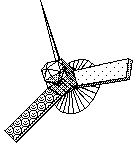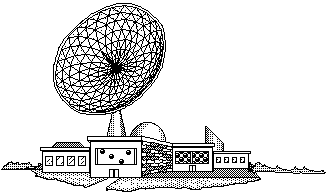 Go to Main Index
Go to Main Index Go to Main Index
Go to Main Index![]() Acknowledgements
Acknowledgements
![]() Foreward - General Instructions
Foreward - General Instructions

AP Chemistry by Satellite
Laboratory Manual
Student Edition
![]()
|
John I. Gelder |
||||||

Arts and Sciences Teleconferencing Service
Oklahoma State University
Stillwater, Oklahoma

|
Student Edition By John I. Gelder, Nancy S. Gettys, I. Dwaine Eubanks |
|
Page |
|
Acknowledgement..............................................................................iii |
| Appendices | |||
|---|---|---|---|
|
|
Chemical Safety Information | ||
|
|
General Instructions for the Operation of the | ||
| Blocktronic Spectrometer |
|
This material is based upon work supported by the National Science Foundation under grant No. MDA-87551528. Any opinions, findings, and conclusions or recommendations expressed in this publication are those of the authors and do not necessarily reflect the views of the National Science Foundation. Any mention of trade names does not imply endorsement by the National Science Foundation. |
This laboratory manual was originally designed for use with AP Chemistry by Satellite, a telecommunication course formerly produced by the Arts and Sciences Teleconferencing Service (ASTS) at Oklahoma Sate University. It has been edited to provide you, the AP Chemistry student with a rewarding laboratory experience. The experiments in this manual are based on college level experiments used at Oklahoma State University adjusted to fit the time and facilities found in most high schools. An effort has been made in this manual to provide clear and complete instructions in each procedure. The style and emphasis of the manual complement the AP Chemistry curriculum recommended by the College Board as taught in AP Chemistry by Satellite.
Chemistry is an experimental science. The experiments in this manual were developed to provide an experimental view of some of the chemical concepts introduced in a typical AP Chemistry course. Some experiments will cover material in greater depth than your instructor does in his or her lectures. Other experiments will verify models introduced in lecture through experimental exploration. The laboratory work you do is critically important to your complete understanding of a complex and exciting subject. Because laboratory work is so important, questions regarding the experiments will be probably be included on regular class examinations. Questions concerning laboratory work are always included on the AP Chemistry Exam.
Safety in the chemistry laboratory is a critically important issue. Be sure that you follow all safety procedures and wear approved eye protection while in the laboratory. State laws vary on the level of eye protection required in the chemistry laboratory. We recommend wrap-around splash-proof goggles be worn at all times in the laboratory. Laboratory coats or aprons are also recommended, if available. Your instructor will spend some time before beginning each experiment explaining how to handle any hazardous chemicals used in the laboratory. Listen carefully to these instructions and if you have questions--ask. An effort has been made to reduce the amount and variety of hazardous reagents used in the experiments. However, they have not all been eliminated. Pay attention to what is happening around you at all times. Keep your safety goggles on at all times while you are in the chemistry laboratory.
Appendix I, located near the end of this manual, contains a list of all chemical reagents encountered in this manual. An attempt has been made to include all substances used and all those produced in chemical reactions. If you discover any substances that have not been included, please tell your instructor. Appendix I consists of a table listing the name, the formula and the chemical abstract number of each substance. A brief physical description of the substance is given, along with the health, fire, reactivity, and contact hazard codes. A brief written description of any special hazards has also be included and the experiments in which the chemical will be encountered has been listed. As you read through the experimental procedure prior to coming into the lab, take a few moments to look up the chemicals you will be using in the appendix and read the information listed there.
Most of the experiments in this laboratory manual consist of three important sections. The pre- laboratory questions, the experimental procedure, and the post-laboratory questions. Each plays an important role in communicating the goal of the experiment.
Pre-laboratory Questions The pre-laboratory questions consist of a number of exercises which are to be completed before starting the experiment. The questions are of several types. Some focus on a particular type of calculation important in the experiment. Some focus on an important organizational or laboratory technique used in the experiment. And others introduce important terms, concepts or nomenclature needed in the experiment. Reading the experimental introduction and procedure will assist in answering some of the questions. The pre-laboratory questions have been designed to help you think about and use ideas important in the experiment. Some questions may be challenging. Set aside enough time to complete the
pre-lab so that if you encounter a question which proves too difficult, assistance can be obtained from your instructor. If you work with other students on the problems, complete the answers to the questions in your own words. Do not copy someone else's work, or allow your work to be copied. The pre- laboratory questions will be collected by your instructor before you begin the experiment. The complete experiment must be read before coming to the laboratory. In cases where the experiment is too long to complete in one class meeting, your instructor will provide some guidance as to how much to read before each lab session. Coming to laboratory unprepared will make it difficult to progress at an acceptable rate. You will fall behind other students in your class. Laboratory will be more interesting and safer when you are prepared. It is likely that during your reading of the experiment certain ideas, experimental procedures or techniques may not be clear. This is to be expected. You will be able to ask questions and receive specific help from the instructor about these areas. One technique which you may find useful in preparing for a new experiment is to read the procedures to set the laboratory manual aside and try to write out the procedure in your own words on a separate piece of paper. This technique will get you to think in detail about the experiment and will make you consider important procedural questions which would not have arisen from a cursory reading.
Experimental Procedure The laboratory procedure includes all of the instructions you will need to complete the experiment. In many cases diagrams are included to help you identify and assemble equipment. If the instructions are not clear, ask your instructor for help. Spaces have been provided for you to record your observations, data and answer questions. Please note that in all cases, the manual instructs you to weigh chemical reagents by subtraction. Spaces have been provided for you to weigh all reagents by subtracting the mass of weighing paper or other containers. If you are using an electronic balance with a "tare" function, it is not necessary to record the subtraction data. Your instructor will show you how to use the balances in your laboratory properly. Graph paper has been provided where plotting of data is required. If you have access a computer and printer capable of producing the needed plots, your instructor may suggest that use the computer instead of plotting by hand. In addition to the laboratory manual, you will need to bring something to write with, a scientific calculator, and your textbook to each laboratory session.
Post-laboratory Questions The post-laboratory questions are designed to apply some of the important ideas developed in the experiment. They will test your knowledge of calculations, procedures, and possible errors in the experiment and how those errors could alter your results. The post-laboratory questions must be completed and handed-in with the experiment. You may not be given time to complete data analysis and post-laboratory questions in class. You may be expected to complete this work outside of regular class time, as homework. This should not require more that one or two hours of work for each experiment. If completion of the write-up is requiring a great deal more time, you should contact your instructor for assistance. The entire completed laboratory report will be collected by your instructor for grading, usually a few days after the actual laboratory work has been completed. Your instructor will set a due date for each experiment. The authors recommend that the absolute deadline for turning in lab reports is one week after the last lab session used on that experiment.